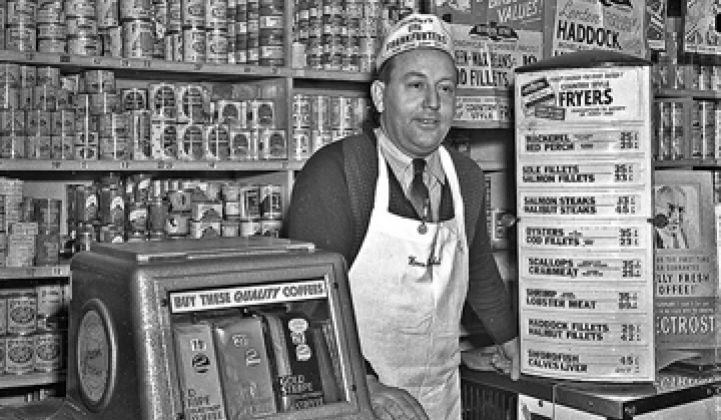Maybe the first energy-smart buildings to reach mass-market scale won’t be data centers or showcase corporate headquarters, but your neighborhood grocery store.
That’s what Verisae is hoping. The Minneapolis, Minn.-based company has just launched its Apollo platform, which aims to link grocery store electricity loads -- refrigerators, ovens, lighting, HVAC systems, checkout stand computers and the like -- to a centralized platform aimed at maximizing energy efficiency and minimizing costs.
Can a move to full building energy automation succeed?
There’s certainly a market for those that can make it happen. Research firm Verdantix estimates the U.S. energy and carbon management enterprise software market will grow from $207 million this year to $558 million by 2014, and Gartner puts the broader U.S. sustainable technology market at $3.9 billion as of this year, with energy management making up $560 million of that total.
But whether current and future markets are ready for fully automated energy management to take a significant portion of that spending remains to be seen. While automated “smart building” pilot projects from players like Siemens, Schneider Electric, Honeywell, Johnson Controls, IBM, and EnerNOC abound, fully automated commercial rollouts are quite rare. In fact, Cisco recently pulled out of the building energy automation market, seeing a lack of near-term opportunity.
Where Verisae differs from these would-be competitors, said CEO Jerry Dolinsky, is in its deep penetration and expertise in its chosen field of retail properties, and specifically, food retailers. Over the past 10 years, it has built a roster of 60-plus clients, including massive grocery chains such as Ahold, Tesco, and Sainsbury’s in Europe and Target, Safeway, Walmart, HEB, and Supervalu in the United States, as well as customers in other retail fields like auto parts.
That’s given Verisae a lot of devices to connect to, and a lot of data to pull from those devices. Refrigerators, for example, have to be monitored in five- to 15-minute increments to comply with food safety and refrigerant gas emissions regulations, Dolinsky explained. Lighting and HVAC systems have their own networked controls, though often they’re left to the manual oversight of store managers, rather than being centralized. Cash register and inventory management systems are also networked, making them available to Verisae’s energy and preventative maintenance data normalization and analysis engines.
Until recently, Verisae has been “crunching all the data, normalizing it and putting it into a database,” Dolinsky said in a phone interview last week. “The process then would be to run a report,” identifying all the stores where parking lot lights or store air conditioning units were being left on overnight, or where refrigerators were improperly going through defrost cycles twice a day, to name a few of the energy-wasters common in the industry -- a backward-looking process that helped customers shave 10 percent to 15 percent from their energy and maintenance budgets, he said.
But with the launch of Apollo as a software-as-a-service (SAAS) platform for its customers, “Now we’re doing it in near-real time,” he said. “Data is streaming in five- to 15-minute increments. Now I’m not looking at reports -- it’s a full circle. I flagged it; I don’t need any human intervention.”
The concept relies on setting triggers for automated action -- things like power going to systems that aren’t needed at night, or unexplained increases in energy usage at particular locations. That can automatically turn off systems that don't need to be on in simple cases, or in more uncertain situations, automatically create work orders to send maintenance crews to check out problems that might otherwise take weeks to catch.
Dolinsky expects that automating these energy management and maintenance functions should allow customers to shave an additional five percent from both their energy and maintenance budgets. While he wouldn’t name the price Verisae is charging customers to use its Apollo platform, he did insist that the company was targeting a nine-month return on investment -- and would re-price the SAAS platform to achieve a nine-month return if initial results didn’t bear that out.
Right now, Verisae is rolling out the Apollo platform to an unnamed U.K. grocery store chain across about 1,300 locations; several more existing customers are also piloting the system. The firm is also testing out the platform with a major auto manufacturer, Dolinsky said -- the only one of its pilot partners that isn’t already an existing customer.
David Metcalfe, CEO of U.K. research firm Verdantix, said that Verisae does have a “best in class” reputation for grocery retail energy management, predictive analytics and sustainability reporting, which gives their new Apollo platform a good chance of being adopted. Of course, he also warned that it’s too early to tell whether the platform will deliver its promised cost reductions -- and that success will depend on each customer actually following the best practices the platform recommends.
Whether Verisae can bridge to other industries is a different question. While Verdantix sees 51 percent growth in the energy management software field in the next four years, its tally of the U.S. retail industry’s share of that market for 2011 stood at a relatively paltry $17 million, with only 42 percent annual growth predicted over the next half-decade. That might be one reason Verisae is seeking to expand to industries outside retail -- but of course, different industries have different incumbents of their own to contend with.
At the same time, well-funded startups like Hara and C3 are moving in from the top down to take a share of the broader market, launching enterprise-level carbon, energy and sustainability platforms to collect and manage the kinds of disparate, facility-level data that Verisae specializes in collecting. As an example, Metcalfe noted that Palo Alto, Calif.-based Hara is supplying its software to Safeway, which is also a Verisae customer. It will be interesting to see whether that grocery chain ends up choosing one or the other -- or perhaps, combining the two into a more useful whole.



